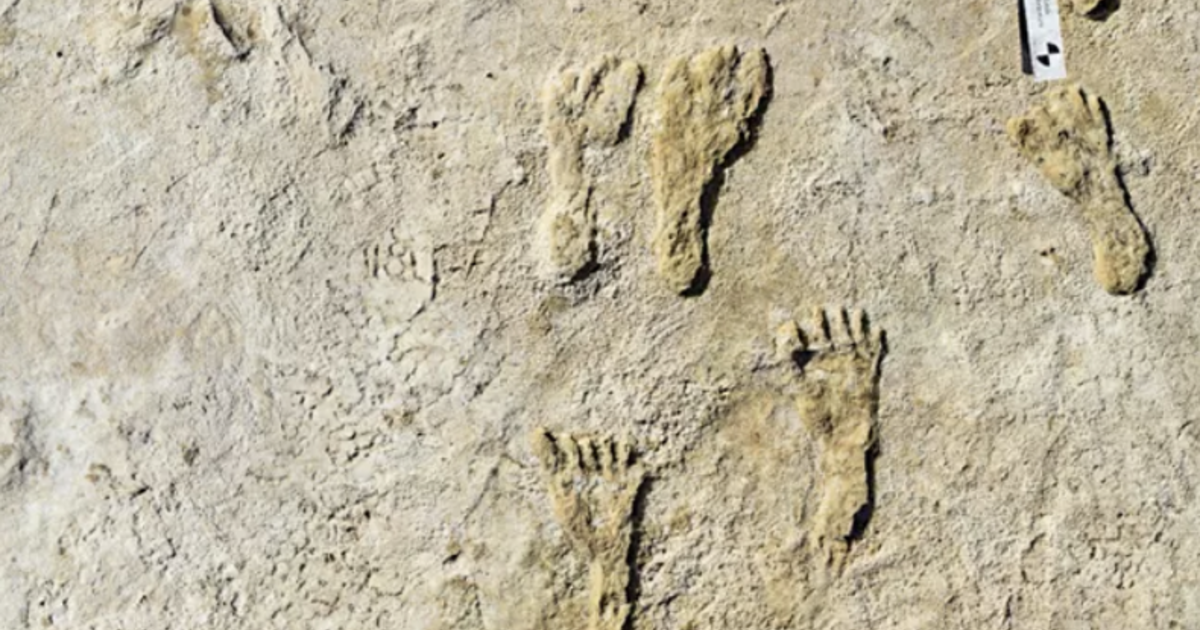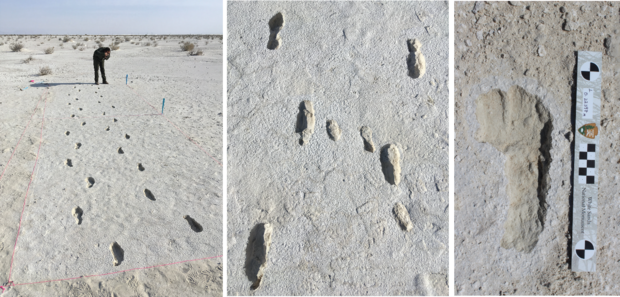Scientists have confirmed that fossilized footprints found in New Mexico are between 21,000 and 23,000 years old — meaning humans existed in North America much earlier than previously believed.
The originally study about the footprints, discovered embedded in the ground of White Sands National Park in New Mexico, was published in September 2021, sparking conversations, with some questioning the accuracy of the findings.
It was believed humans existed in North America somewhere between 13,500 and 16,000 years ago. So, were the prints — some of which look distinctly human with five toes — really between 21,000 and 23,000 years old?
Researchers from the U.S. Geological Survey (USGS) and other scientist decided to do a follow-up study, using two new approaches to determine the age of the prints.
NPS
“The immediate reaction in some circles of the archeological community was that the accuracy of our dating was insufficient to make the extraordinary claim that humans were present in North America during the Last Glacial Maximum,” said co-author of the new study, Jeff Pigati, a USGS research geologist. “But our targeted methodology in this current research really paid off,”
The scientists initially used seeds from the Ruppia cirrhosa plant found in the fossils. They used radiocarbon dating to determine the age of the seeds, but because the plants are aquatic and can hold carbon from the water instead of the air, the age estimate could have been off.
So, in the new study, they used radiocarbon dating on conifer pollen, which comes from plants on earth, that were found in the same layers as the seeds. “Even as the original work was being published, we were forging ahead to test our results with multiple lines of evidence,” said co-author Kathleen Springer, a USGS research geologist. “We were confident in our original ages, as well as the strong geologic, hydrologic, and stratigraphic evidence, but we knew that independent chronologic control was critical.”
The researchers had to isolate a whopping 75,000 pollen grains from the same layer and found that their age was statistically identical to the Ruppia cirrhosa seeds.
To further check their dating, they also tested quartz grains found in the footprints using a different dating process, optically stimulated luminescence. They found the quartz had a minimum age of about 21,500 years.
USGS says with three corroborating pieces of evidence, it is unlikely the age range of 21,000 to 23,000 years is incorrect.
NPS Photo
Footprints have been found at White Sands before, according to the National Park Service. After first finding footprints in a lakebed in 2006, scientists later dug them up and found both human and sloth footprints. They later found direwolf prints and dated those 18,000 years by using ancient seeds found nearby. They also found footprints of a female and a toddler in 2018.
In 2018, researchers discovered what they believe to be footprints of a female. They tell a story that may seem familiar today; her footprints show her walking for almost a mile, with a toddler’s footprints occasionally showing up beside hers. Evidence suggests that she carried the child, shifting them from side to side and occasionally setting the child down as they walked. The footprints broadened and slipped in the mud as a result of the additional weight she was carrying.
The 2021 study found the footprints mainly belong to teens and children, which may be due to a division of labor, with teens performing “fetching and carrying tasks” and children accompanying them.














